10 Species of Cardinal Birds
Last Updated on
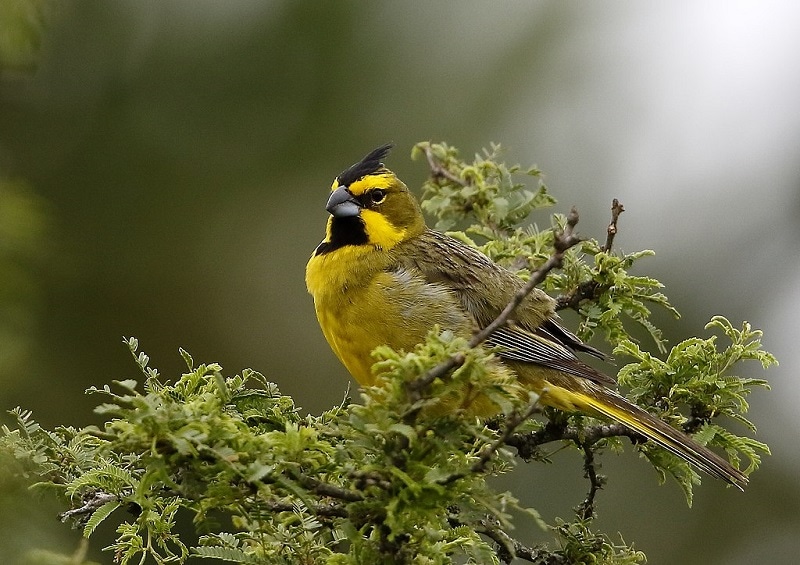
Cardinals are part of the order Passeriformes, or perching birds. They make up most of the visitors to the average backyard feeder. The group includes a broad spectrum of different sized birds and specializations. The familiar red-crested avian is a member of the aptly named family, Cardinalidae, which includes other familiar songbirds, such as the Scarlet Tanager, Indigo Buntings, and Rose-Breasted Grosbeak.
Cardinals live throughout North, Central, and South America. However, there are only two species that exist in the United States, along with one accidental species and an introduced one. The latter are wanderers that sometimes go outside of their typical range for myriad reasons, whether due to a storm or an unplanned voyage on a ship.

The 10 Types of Cardinal Birds
1. Northern Cardinal (Cardinalis cardinalis)

The Northern Cardinal is one of the most beloved American songbirds. The striking color of a male’s bright-red breeding plumage is a stunning sight. This avian also has a distinctive call of “birdy-birdy-birdy” that is hard to mistake, even if you can’t spot them in the trees. This bird lives in the eastern half of the country and down into Mexico. They feed primarily on seeds and fruits.
2. Desert Cardinal (Cardinalis sinuatus)
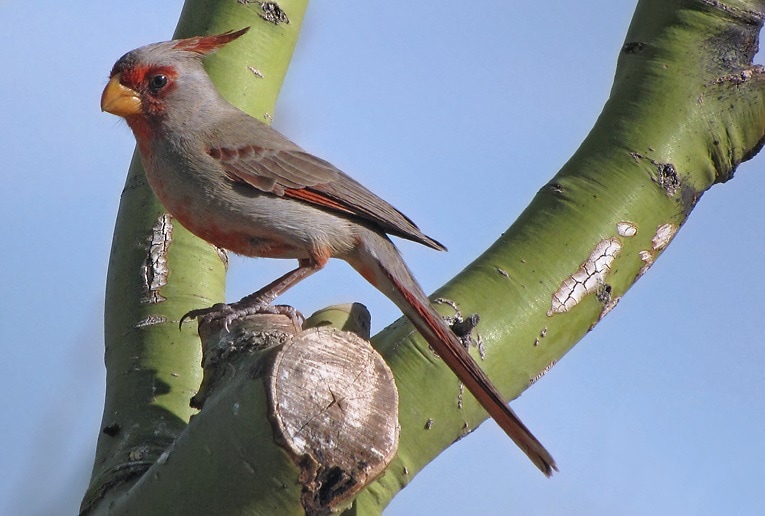
The Desert Cardinal, or Pyrrhuloxia, is an appropriately named bird that inhabits the American Southwest into Mexico and Central America. Instead of being red, this one is gray with a larger crest. The color provides excellent camouflage in their shrubland habitat. While the International Union for Conservation of Nature and Natural Resources (IUCN) lists it as a species of least concern, their numbers have decreased.
3. Red-Crested Cardinal, a.k.a. Brazilian Cardinal (Paroaria coronata)
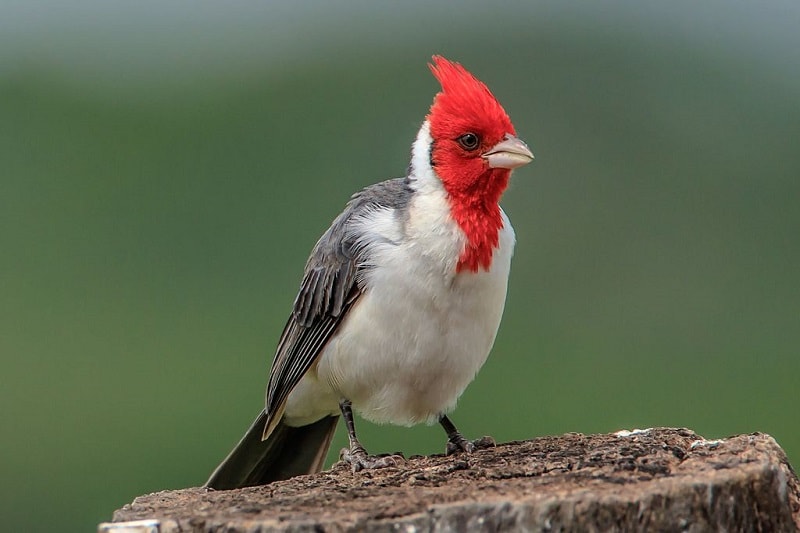
The Red-Crested Cardinal calls central South America their home. However, birdwatchers have sighted it in Florida, Connecticut, and Pennsylvania. Interestingly, this bird typically isn’t a migrant. They prefer the shrublands of their native land. Their range is quite extensive in South America. They are a species of least concern with stable numbers, according to IUCN.
4. Yellow-Billed Cardinal (Paroaria capitata)
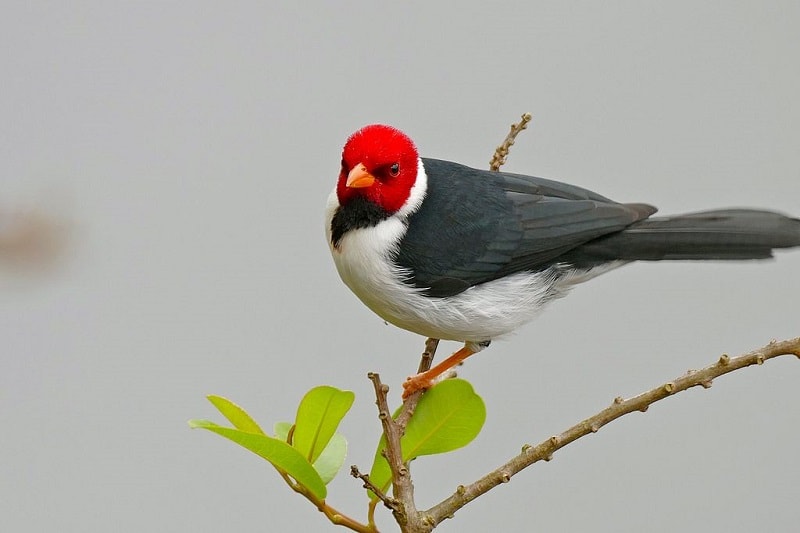
The Yellow-Billed Cardinal looks similar to other Cardinals, except for their brightly colored beak and golden eyes. This species prefers wetlands of all types, whether the marshes or swamps of Argentina, Uruguay, and Paraguay. Technically, this is not a species native to the United States. They are an introduced bird to Hawaii.
5. Masked Cardinal (Paroaria nigrogenis)
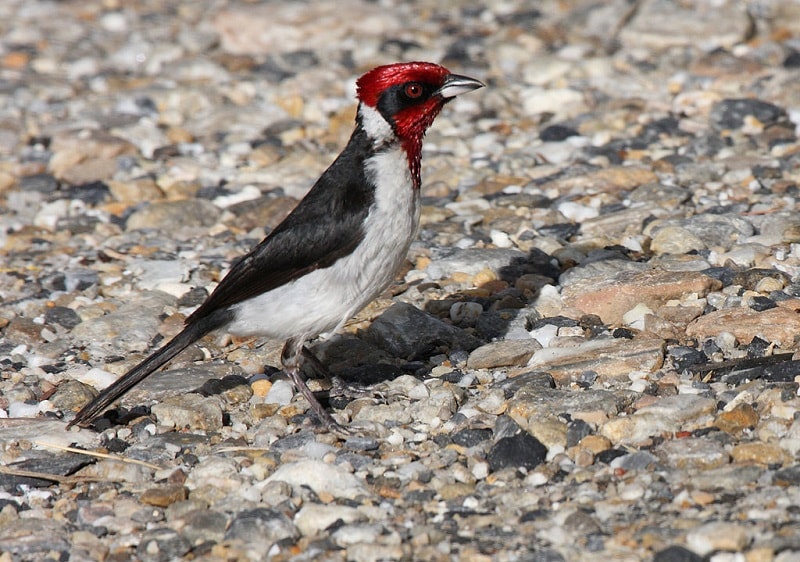
You’ll find the Masked Cardinal in the savannas and forests of Bolivia, Columbia, and Trinidad. This bird is a year-round resident of these areas. They don’t have a crest and more resemble a woodpecker with their red head, white chest, and dark gray body. Unlike the Northern Cardinal, males and females look alike.
6. Red-Cowled Cardinal (Paroaria dominicana)

The Red-Cowled Cardinal has a similar coloration pattern as the Masked Cardinal, but their back has white stripes instead. You’ll see this bird in the shrublands and forests of Brazil. You may even find them in city parks. Perhaps because they’ve adapted to the presence of humans, they are a species of least concern with a stable population, despite their smaller range.
7. Crimson-Fronted Cardinal (Paroaria baeri)
https://www.instagram.com/p/CMCyXuZBKqG/
The name of the Crimson-Fronted Cardinal refers to the brandywine coloration on their forehead and throat. Otherwise, they have a white chest and a dark back. You’ll typically see them near rivers and streams. They have a relatively small niche in the forests and shrublands of Brazil. Nevertheless, they are a species of least concern, with a stable population.
Related Read: 10 Best Bird Feeders for Cardinals: Reviews & Top Picks!
8. Vermilion Cardinal (Cardinalis phoeniceus)

The Vermillion Cardinal is a savanna bird of Columbia, Venezuela, and Bolivia. They are almost comical looking with their oversized crest and beak. They are all red, hence their name. While they are a species of least concern, their numbers have been declining in recent years due to pressure from the pet trade. They are a relatively long-lived bird, living at least a year longer than similar species.
9. Yellow Cardinal (Gubernatrix cristata)

The Yellow Cardinal is a handsome bird with a brightly colored body contrasted by a black crest. Unlike many other Cardinal species, this one is endangered, according to the IUCN. They are a victim of the pet trade. Habitat encroachment is another threatening factor. This may explain their preference for the cover of forest versus open country, where they are more vulnerable.
- You might also like: 7 Common Yellow Birds (with Pictures)
10. Red-Capped Cardinal (Paroaria gularis)
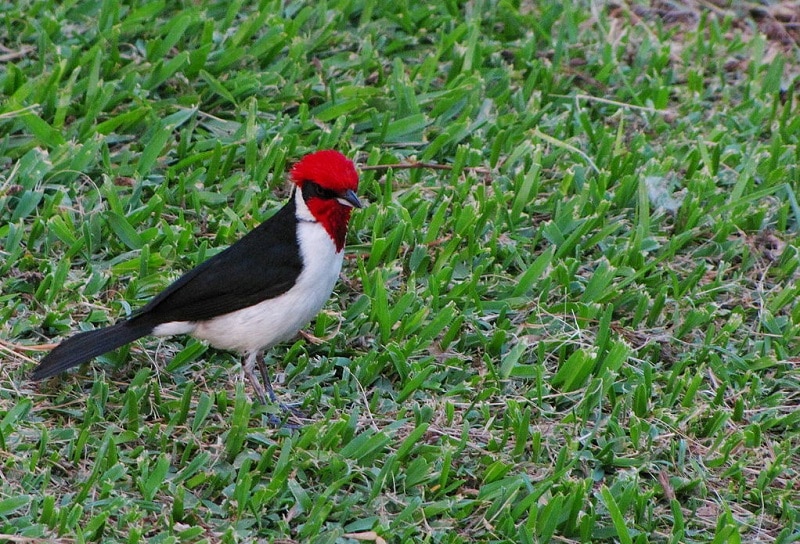
The Red-Capped Cardinal lives in the grasslands and savannas of Brazil, Peru, and Ecuador. They often inhabit wetlands of varying types. They are a species of least concern, with a stable population. This bird isn’t elusive but instead, is quite social. As their name implies, this avian has a bright red head, which is offset by their white chest that gives them a striking appearance.

Final Thoughts
There is a great deal of variation among the different Cardinal species. A lot of birds have extensive ranges with little fragmentation. This has helped their populations stay stable with the pressures of habitat loss and encroachment. Unfortunately, the pet trade is taking a toll on some species. Hopefully, their numbers can rebound with some dedicated conservation efforts.
If you want to learn more about birds, check out some of our other posts:
- 5 Types of Falcon Species in the United States (with Pictures)
- 10 Species of Hawks in Colorado – What You Need to Know!
- How to Use a Spotting Scope for Birding (4 Helpful Tips)
Featured Image Credit: Hector Bottai, Wikimedia Commons
Table of Contents
- The 10 Types of Cardinal Birds
- 1. Northern Cardinal (Cardinalis cardinalis)
- 2. Desert Cardinal (Cardinalis sinuatus)
- 3. Red-Crested Cardinal, a.k.a. Brazilian Cardinal (Paroaria coronata)
- 4. Yellow-Billed Cardinal (Paroaria capitata)
- 5. Masked Cardinal (Paroaria nigrogenis)
- 6. Red-Cowled Cardinal (Paroaria dominicana)
- 7. Crimson-Fronted Cardinal (Paroaria baeri)
- 8. Vermilion Cardinal (Cardinalis phoeniceus)
- 9. Yellow Cardinal (Gubernatrix cristata)
- 10. Red-Capped Cardinal (Paroaria gularis)
- Final Thoughts
- The 10 Types of Cardinal Birds
About the Author Robert Sparks
Robert’s obsession with all things optical started early in life, when his optician father would bring home prototypes for Robert to play with. Nowadays, Robert is dedicated to helping others find the right optics for their needs. His hobbies include astronomy, astrophysics, and model building. Originally from Newark, NJ, he resides in Santa Fe, New Mexico, where the nighttime skies are filled with glittering stars.
Related Articles:
How to Clean a Refractor Telescope: Step-by-Step Guide
How to Clean a Telescope Eyepiece: Step-by-Step Guide
How to Clean a Rifle Scope: 8 Expert Tips
Monocular vs Telescope: Differences Explained (With Pictures)
What Is a Monocular Used For? 8 Common Functions
How to Clean a Telescope Mirror: 8 Expert Tips
Brightfield vs Phase Contrast Microscopy: The Differences Explained
SkyCamHD Drone Review: Pros, Cons, FAQ, & Verdict
